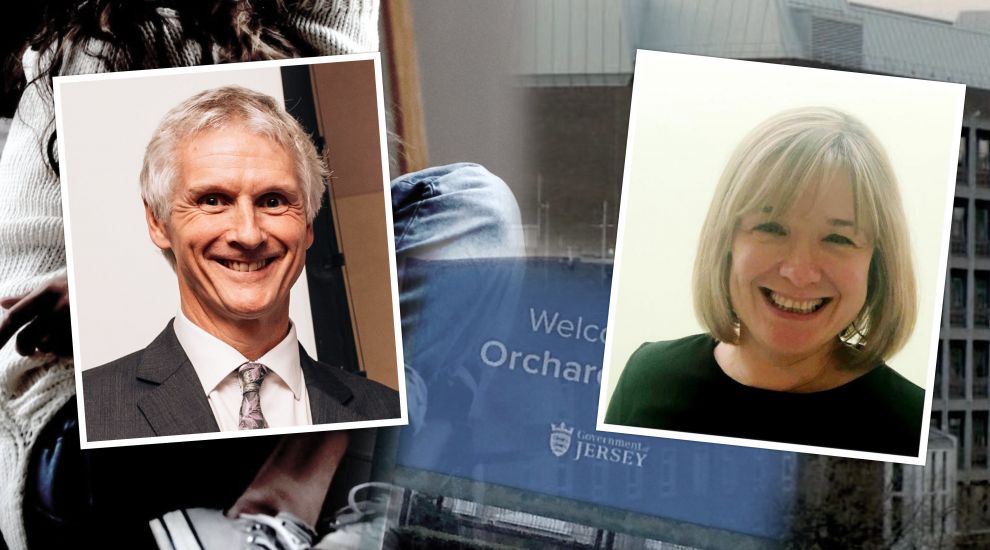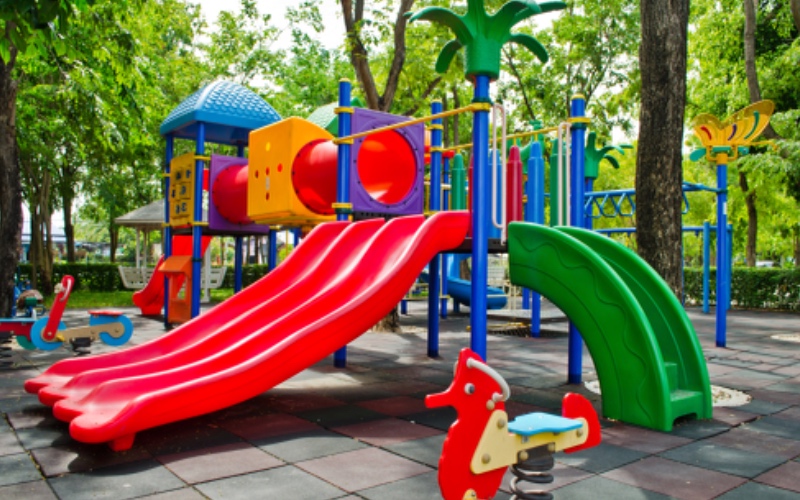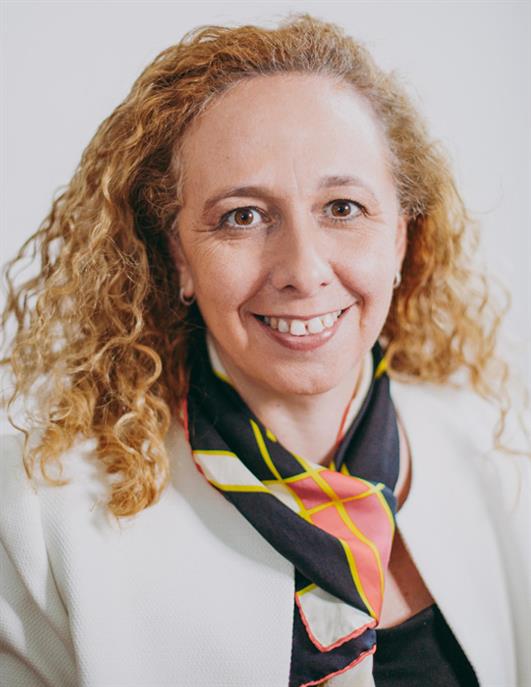


When the former CEO tore up the structure of Government, the idea was to make processes more efficient – but, three years later, it’s now emerging that those changes have created a confusing chain of command and an “overload of bureaucracy” that is impacting the services meant to support children in mental health crisis.
The Child and Adolescent Mental Health Service (CAMHS) was previously part of the Health and Community Services (HCS) Department.
However, in 2018, it was moved to the restructured Education Department - Children, Young People Education and Skills (CYPES) - as part of Charlie Parker's 'OneGov' regime, which saw multiple departments chopped and changed.
This week, the impact of those changes was brought into sharp focus when politicians on the Public Accounts Committee (PAC), which is responsible for scrutinising the way taxpayers' money is spent and ensuring good governance, grilled Caroline Landon and Mark Rogers, the Directors General of Health and CYPES respectively, over their responsibilities and joint working.
Mr Rogers explained that the rationale for the change had been to “bring together as many services families needed to benefit from in coordinated way” and “create the opportunity for greater synergy around the integration of support for children and their families”.
However, as Ms Landon explained, the move has led to challenges - something she argued always happens “when provision services move”.
“Some of the challenges have been around lines of management; the management of clinicians still sits within HCS for governance purposes and for clinical supervision and lines of accountability through to the professional leads,” she explained.
Scrutineers were left concerned with what they heard, calling out the "overall lack of clarity over responsibility" for services helping children with their mental health.
Here, Express digs into the issues raised...

Pictured: CYPES and HCS share responsibility for CAMHS.
The joint responsibility of both Director Generals appeared to puzzle the panel, with several members asking for clarification over who was responsible for what.
Mr Rogers said that no one department was the lead on CAMHS, with some of the services sitting with CYPES whilst acute and in patient services sit within HCS. “It’s a joint responsibility we have different aspects of the way CAMHS is organised and delivered that we are responsible for,” he explained.
“We work together particularly around our quality performance metrics, because the clinicians who deliver care for CAHMS sit within HCS, which is right and appropriate, and the service sits within CYPES” Ms Landon added, noting she provided the clinicians that provide acute care through Orchard House as well as through Robin Ward.
“We have to a really clear quality governance around that and we manage that through our quality performance report, which is our report that we published for the first time this year. We have really clear metrics around deliverables for CAMHS and that goes to our governance, to our safety committee through to our board.
“Mark has similar governance structures within CYPEs and we communicate across that governance framework because our predominant concern in HCS is that the care that’s being delivered is measurable, qualitative and safe, whereas Mark is responsible for the business and for the finances.”

Pictured: No 'Memorandum of Understanding’ was in place before the service moved from one department to the other.
During the discussion, it also emerged that there had been no ‘Memorandum of Understanding’ in place before the service moved from one department to the other, but that one had been developed since.
“When I joined the Government in May 2018 there wasn’t to my knowledge a MoU and I don’t know whether one had previously existed,” he told PAC.
However, the Director General for CYPES said that a new version of the MoU was under development “to reflect where the service is moving to and where it has moved the past three years” and would be published by the end of March 2022.
“Within the MoU, we will be clearer about expected responsibilities and outcomes that we are looking for,” he said. “But ultimately, outcomes are set out in department or government level plans anyway in terms of this set of activities.”
PAC member Senator Tracey Vallois questioned who would be responsible for putting in business cases for the growth of the service, or its “business as usual”, given that the two departments are separate and that funding might be needed to avoid “safeguarding issues” around the professional or clinical governance requirements.
Mr Rogers said that arrangements needed to be “strengthened” and that issues could be discussed with the Executive Leadership Team. He added that this relied upon a “good working relationship” at senior leadership team level to create dialogue across departments and that stronger arrangements between his department and Ms Landon’s were required.

Pictured: Mr Rogers said both departments were “aspiring” towards better work together.
Mr Rogers admitted that both departments were “aspiring” to work more closely together.
“We do have joint responsibility for the continuum of care,” he said. “We have our respective performance indicators around that but we haven’t developed those in isolation from each other. We are aware and discussed with each other what should be in this basket of metrics, so I would hope that we and you saw them as complimentary.
“...It's not as stark as two independent departments doing their own thing, but what we are needing to do is more and more work together because there are still synergies that we haven’t realised between the departments in terms of providing a much more integrated and seamless offer to families.”
Ms Landon said both her and Mr Rogers were “very clear” that their responsibility was to “deliver the best service for the Minister”, adding that they do not stick “rigidly” to accountability because it wouldn’t work well.
Addressing the panel’s concerns that there might “double working”, Mr Rogers admitted that it might feel “over-engineered” but said that in his view it was better than not having “enough governance” as it meant there was “very little likelihood of things falling through the cracks”.
Despite the ongoing challenges, Mr Rogers said they “starting to reap the dividend” of the majority of CAMHS being moved to CYPES because of the close working with professionals from CAMHS and social workers, amongst others. “There is a greater alignment of work than there ever was,” he said.

Pictured: There are also issues in the way the Child Development Centre is run.
Issues were also identified in the way the Child Development Centre, who also sits between the two departments, is run with Ms Landon unable to explain the relationship between the service’s Chief Nurse, Medical Director and Head of provision and the Director of Children’s Health and Wellbeing.
“I don’t have the answer to that, I’d need to get clarity on that,” she said.
Dr Helen Miles, one of the PAC lay members, said she was “confused” about how the Centre’s outcomes where monitored and noted how “nobody seems to know who is monitored”.
Ms Landon said there was a mix of staff in the centre and that those under HCS have clinical supervision and conversations about medical practice.

Pictured: Deputy Inna Gardiner chairs the Public Account Committee.
Following the hearing, PAC issued a press release in which they voiced concerns over “the lack of clarity and shared responsibility” for CAMHS.
Whilst they said they understood collaboration is beneficial, they stressed that accountability for specific aspects of key public services was “vital” and noted how the agreements between the departments relied “too heavily”on the good working relationship of the current Director Generals.
“The Public Accounts Committee welcomes the commitment of the two Director Generals to improve services,” the panel chair, Deputy Inna Gardiner, said. “It shares the aspirations of the outgoing Director General of Children, Young People, Skills and Education Department’s that CAMHS should be a leading service in context of other jurisdictions. However, we have concerns about whether all the changes and shared responsibilities between the two departments actually lead to better outcomes for the vulnerable groups they serve, especially children and young people’s mental health services.
“We want to see efficient streamlined services with clear lines of responsibility, supporting those most in need and we are concerned there is an overload of bureaucracy and new silos forming which hinder this.
“We are looking forward to a strategy which encompasses all of the health and community services and allows them to work as a cohesive whole. We embrace the One Gov philosophy of collaborative working between departments but there must always be clear accountability and responsibility for when things go wrong and improvements to be made. We are also keen to see more customer feedback being used to improve the services.”
Comments
Comments on this story express the views of the commentator only, not Bailiwick Publishing. We are unable to guarantee the accuracy of any of those comments.